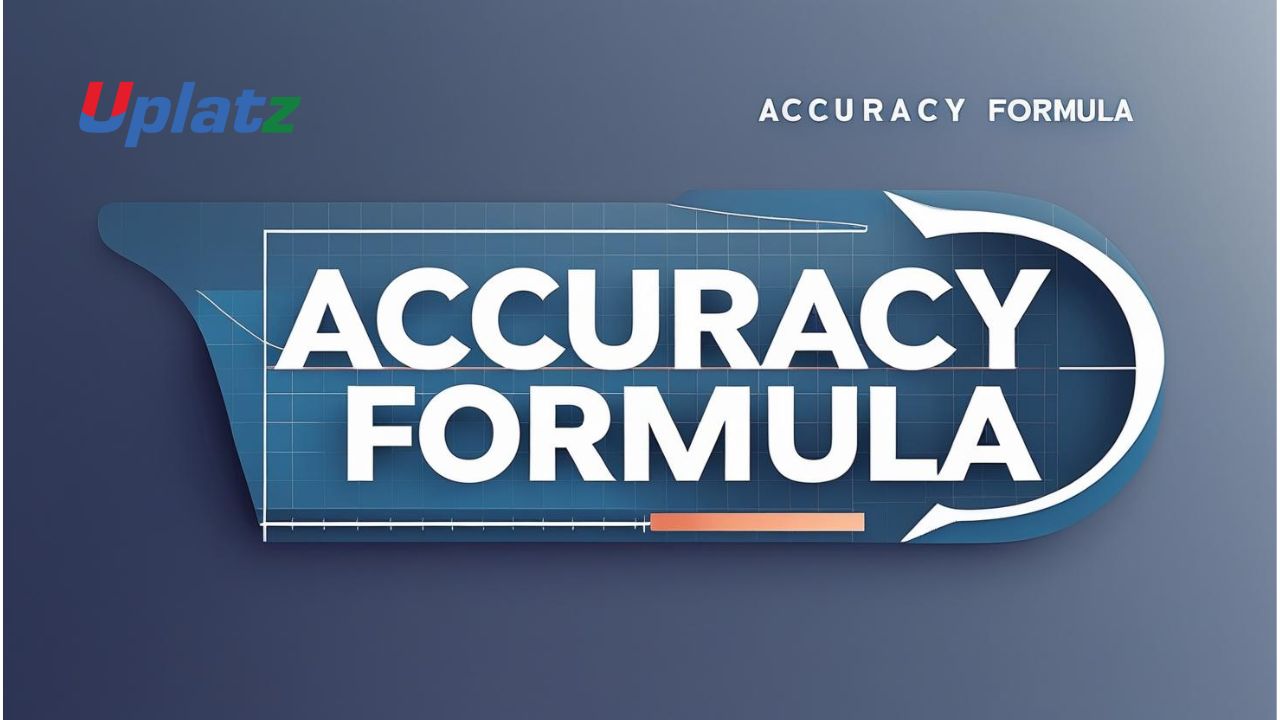 🔹 Short Description:
🔹 Short Description:
Accuracy measures the proportion of correct predictions made by a model. It’s one of the most basic yet important metrics for evaluating classification performance.
🔹 Description (Plain Text):
The accuracy formula is a widely used performance metric in classification tasks within machine learning, statistics, and data science. It tells you how often the model’s predictions match the actual outcomes. In simpler terms, accuracy is the percentage of correctly predicted instances out of all predictions made.
Formula:
Accuracy = (TP + TN) / (TP + TN + FP + FN)
Where:
- TP (True Positives) – Correctly predicted positive cases
- TN (True Negatives) – Correctly predicted negative cases
- FP (False Positives) – Incorrectly predicted positives
- FN (False Negatives) – Incorrectly predicted negatives
Example:
Imagine you built a model to predict whether emails are spam.
Out of 100 emails:
- 60 were correctly labeled as not spam (TN)
- 20 were correctly labeled as spam (TP)
- 10 were spam but predicted as not spam (FN)
- 10 were not spam but labeled as spam (FP)
Then:
Accuracy = (60 + 20) / (60 + 20 + 10 + 10) = 80 / 100 = 0.80 (80%)
Why Accuracy Matters:
Accuracy provides a quick and intuitive measure of how well a classification model performs. It is particularly useful when the dataset is balanced, meaning that the number of positive and negative cases is approximately equal.
It’s often the first metric practitioners look at when evaluating a model’s performance, especially in binary classification tasks.
Real-World Applications:
- Medical diagnostics: Measuring how well a model predicts diseases
- Spam detection: Evaluating email filters
- Credit scoring: Checking if applicants are correctly classified as low/high risk
- Image recognition: Identifying whether an object in an image was correctly labeled
- Customer churn prediction: Assessing if loyal vs. churning customers were identified properly
Key Insights:
- Accuracy is easy to interpret and compute
- A higher accuracy score generally indicates better model performance
- It provides a single-number summary of classification success
- Often used in dashboards, reporting, and initial model comparisons
- Should be paired with precision, recall, and F1-score for imbalanced datasets
Limitations:
- Accuracy can be misleading when data is imbalanced (e.g., 95% non-churn, 5% churn — a model predicting “non-churn” for all will get 95% accuracy but be useless)
- It treats false positives and false negatives equally, which may not be ideal in sensitive applications (e.g., healthcare or fraud detection)
- Accuracy doesn’t provide granular insight into where the model is making errors
- Overemphasis on accuracy can hide problems in model bias or dataset quality
While accuracy is a helpful first-glance metric, effective model evaluation often requires a suite of metrics that go beyond accuracy to better understand and improve prediction quality.
🔹 Meta Title:
Accuracy Formula – Evaluate Classification Model Performance with Clarity
🔹 Meta Description:
Learn how the accuracy formula helps measure the effectiveness of classification models. Understand how to calculate and interpret accuracy, explore real-world examples and limitations, and see why it’s essential to combine accuracy with other metrics in data science and machine learning.
